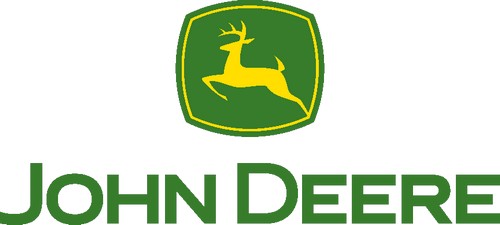The Marketing mix of John Deere analyses the 4Ps of John Deere, which includes the Product, Price, Place, and Promotion of John Deere. John Deere is a public company of American origin. It is associated with the engineering and heavy equipment industry. The company was founded in 1837 by its founder, John Deere. According to the Fortune 500, it occupied the 97th position in America, and according to the Global 500, it was ranked 364th globally. Some of its competitors are as follows-
- Caterpillar
- CNH Global N. V.
- Kubota Corp. Japan
About John Deere
- Type: Public
- Industry: Agriculture machinery, heavy equipment, forestry machinery, diesel engines, drivetrains, and lawn care equipment1
- Founded: 1837
- Founders: John Deere
- Headquarters: U.S.
- Area served: Worldwide
- Current CEO: John C. May
- Number of employees: Over 67,000
- Major Products: Agricultural machinery, heavy equipment, forestry machinery, diesel engines, drivetrains, and lawn care equipment
Table of Contents
John Deere Product Strategy
John Deere manufactures lawn care and heavy equipment for drive trains, diesel engines, forest machinery, construction, and agriculture. It also offers financial and related services to its customers, like lease and sale of its equipment. John Deere provides wholesale financing with long-term warranties to its dealers. It also procures and resells products from a manufacturer to a customer. Products are also sold under brand names like Benye, Sabo, and Frontier.
The product mix of John Deere in 2023 is as follows(Source)
- Agricultural Equipment: This includes various tractors of various sizes, combines for harvesting, balers, planters, sprayers, and tillage equipment. John Deere tractors are particularly renowned for their durability and performance.
- Construction and Forestry Equipment: This category includes backhoes, excavators, loaders, bulldozers, and skidders. They also offer forestry equipment like feller bunchers and forwarders.
- Lawn and Grounds Care: This includes lawn tractors, zero-turn mowers, utility vehicles, and professional landscaping equipment. These products are popular among both homeowners and commercial landscaping businesses.
- Precision Agriculture Solutions: John Deere has been a leader in integrating technology with farming equipment. This includes GPS systems, telematics, and various farming software solutions to improve farm productivity and efficiency.
- Parts and Services: They offer a wide range of parts and services to support all their equipment, ensuring longevity and optimal performance.
- Financial Services: John Deere also provides financial services, including loans and leases for their equipment, making it easier for customers to purchase their products.
- Power Systems: This includes engines, drivetrains, and other powertrain components used in various applications beyond John Deere’s equipment.
John Deere Place Strategy
John Deere is an international company serving a worldwide area. Its headquarters base is at Moline in the United States. John Deere started its operations from a shop at Grand Detour in Illinois. In 1842, a factory was constructed in Illinois near Rock River. This was the start that the company was looking for, and it went on to spread its product quality and network far and wide. John Deere has factories in East Moline, Davenport, Horicon, Waterloo, France, India, Argentina, Germany, Finland, and the Netherlands. Its equipment divisions are in Australia, Brazil, Argentina, China, India and Germany.
John Deere has a solid and widespread distribution channel network that includes the services of retailers and dealers. It has a strong workforce that helps in efficient dealings with the help of capable employees. For techno-savvy customers, the company offers twin options on the internet. Clients can purchase via its official website or from the authorized site dealership. Although products are available at other shopping portals, these two offer a competitive advantage to attract customers in terms of prices.
John Deere’s place strategy is as follows:
- Global Network of Dealerships: John Deere employs a vast network of dealerships worldwide, ensuring that customers have local access to products, services, and support. This strategy helps in maintaining strong customer relations and ensures prompt local service.
- Online Presence and E-Commerce: Recognizing the importance of digital channels, John Deere has a robust online presence, offering product information, sales, and customer service. This approach caters to the growing number of customers who prefer online shopping and information gathering.
- Direct Sales in Selected Markets: John Deere opts for direct sales to large businesses and government entities in specific markets. This allows them to closely manage relationships with key customers and tailor services to specific needs.
- Manufacturing Facilities Worldwide: The company has strategically located manufacturing facilities across the globe, which helps reduce shipping costs and delivery times and meet regional demands more effectively.
- Partnerships and Collaborations: John Deere often engages in partnerships and collaborations with other companies and dealers globally. These alliances help them expand their market reach and offer localized products and services, catering to specific regional requirements.
John Deere Pricing Strategy
John Deere has positioned its brand as a value-based product brand. The company emphasizes innovative and quality products and has set prices according to client expectations. It faces tough competition from rival companies, but John Deere is one of the few in business that does not allow competitors to set the pace.
It looks in its folder and product portfolio and, after deciding on production, sales force distribution, and marketing costs, sets up a favorable pricing policy and a perfect balance for itself and its customers. Its product prices are reasonable, and clients are happy to purchase them even if they seem slightly higher than competitors’ products.
John Deere’s pricing and marketing mix strategies reflect its position as a market leader in agricultural and construction equipment, balancing quality and value. Here’s a breakdown:
- Value-Based Pricing: John Deere adopts a value-based pricing model, setting prices based on the perceived value of its products to customers. This strategy acknowledges their reputation for durability, advanced technology, and superior performance, allowing them to command premium prices.
- Market Segmentation Pricing: Recognizing the diverse needs of its customer base, John Deere employs market segmentation in its pricing. Different segments, like small-scale farmers, large agribusinesses, and construction companies, are offered products at varying prices tailored to their needs and financial capabilities.
- Competitive Positioning: John Deere carefully monitors competitors’ pricing, ensuring their products remain competitive. While not always the cheapest, their pricing strategy is designed to reflect the additional value offered in quality, technology, and after-sales service.
- Financing and Leasing Options: To make their products more accessible, especially to customers whose upfront costs may deter, John Deere provides flexible financing and leasing options. This approach not only facilitates sales but also builds long-term customer relationships.
- Dynamic Pricing for Parts and Services: For parts and services, John Deere often uses dynamic pricing, adjusting to factors like market demand, seasonality, and parts availability. This strategy ensures profitability while also meeting the fluctuating needs of customers.
John Deere Promotion Strategy
John Deere has decided to adopt an extensive marketing plan to encourage sales of its products. It promotes product trials so that customers become aware of its distinguishing features. It participates in various trade shows and industrial fares and offers free demos to keep its clients abreast of its innovative tools and equipment. John Deere has maintained a positive buzz about its brand and products by generating favorable impressions via good social media marketing and relations. It has also launched ads through print media in specialized magazines, offering maximum coverage.
John Deere has been involved in several sponsorship and marketing deals. It sponsored a professional golf tournament titled John Deere Classic and #97 and #23 cars during NASCAR for driver Chad Little. John Deere Green, a John Deere marketing song, was released in 1993 by Joe Diffie. For John Deere enthusiasts, the company has published a Green Magazine with advertisements, letters from magazine readers, and tractor features.
John Deere’s promotion and marketing strategy focuses on the following:
- Integrated Marketing Communications: Utilizing a mix of traditional advertising, digital marketing, and public relations to effectively communicate their brand value and product offerings to diverse audiences.
- Customer Engagement and Loyalty Programs: Engaging customers through loyalty programs, after-sales support, and community involvement, fostering long-term relationships.
- Partnerships and Sponsorships: Leveraging partnerships and sponsorships, particularly in the agricultural and construction sectors, to enhance brand visibility and align with customer interests.
Some Recent Video ads and Print ads of John Deere are:
Liked this post? Check out the complete series on Marketing Mix

